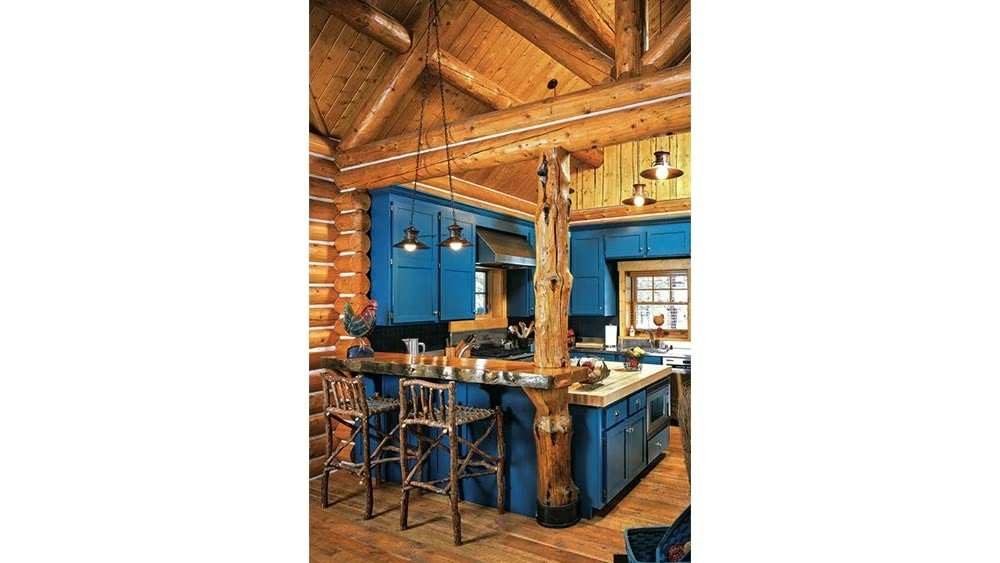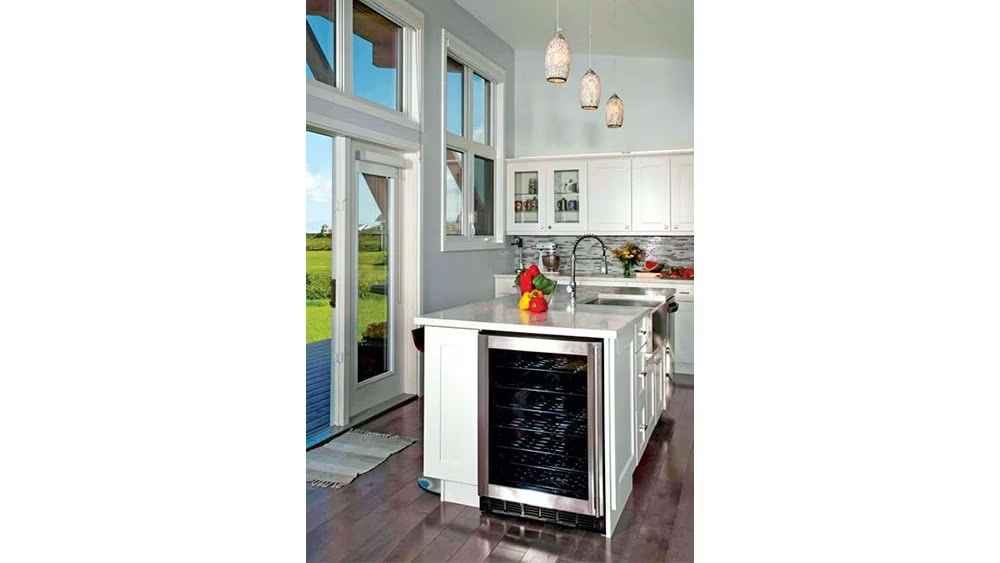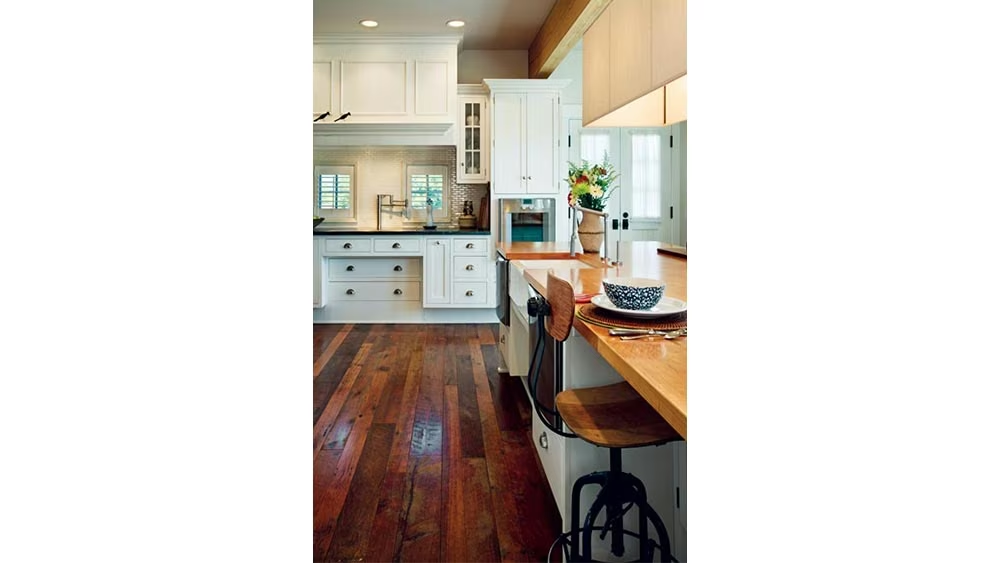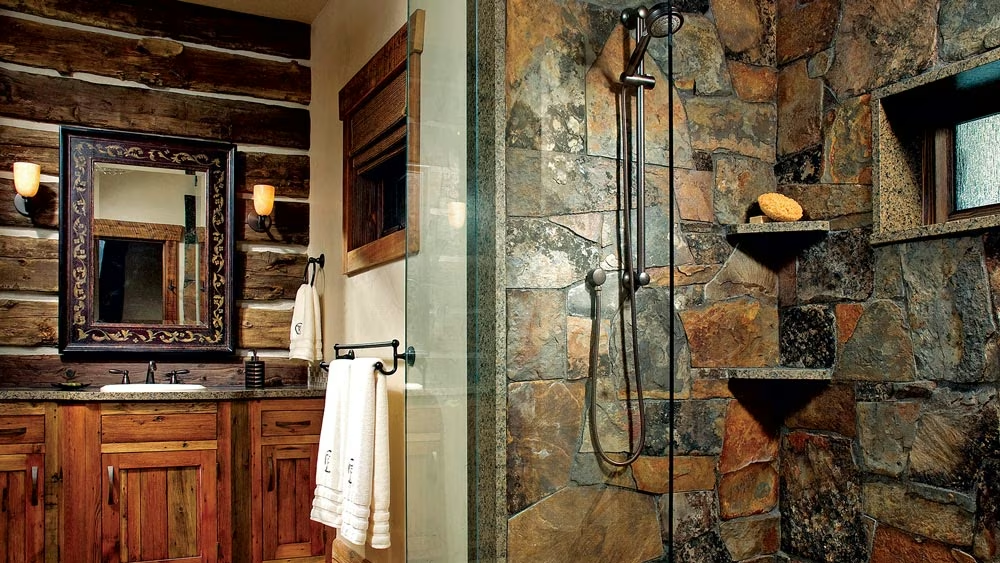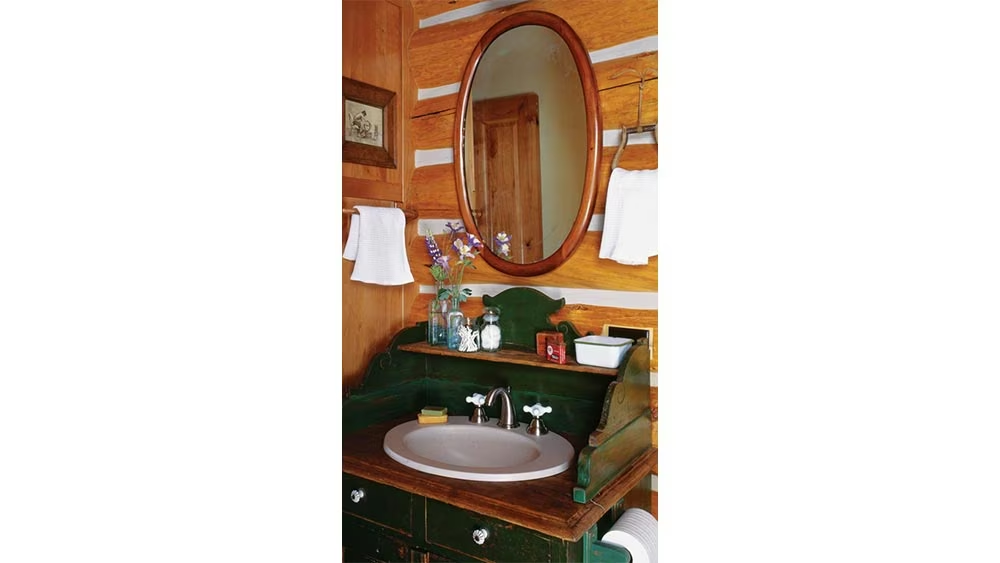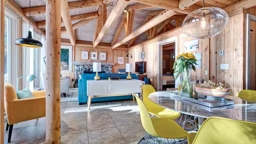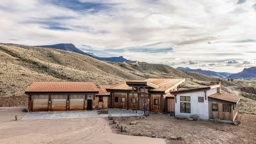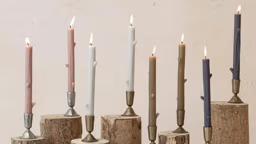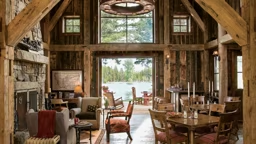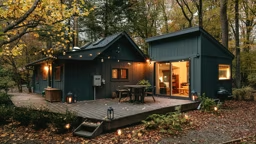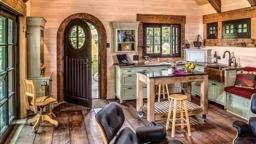With their expense and critical importance to a cabin, kitchens and baths are spaces every homeowner wants to get right. A design misstep in these spaces can lead to daily annoyances at best and unsafe conditions at worst. Careful consideration of these spaces when you’re building new or renovating an existing cabin will pay off in ease of use, efficiency and comfort. Take a look at our tips below, but also consider working with a kitchen and bath designer. Because design pros configure layouts and specify materials and fixtures every day, they can offer solutions and ideas that might not occur to you.
Cabin Kitchens 101
If you want a beautiful, hardworking kitchen like this one, hire a professional designer to make that happen for you.
Courtesy Rocky Mountain Log Homes
Budget
Know what your kitchen budget is? Good, because that number will help you make decisions throughout the design process. If you’re building a new cabin, Juanita Galliford from Bosch Home Appliances offers this tip: “After taking into account appliances, cabinetry, flooring, plumbing and more, I would estimate about 30% of the build budget going toward the kitchen.” Share your budget with your designer so he or she can help you make the most of it.
Layout
One of the first decisions you’ll make concerns the size of your kitchen. If you’re renovating, you may be confined to your existing kitchen’s space. Those planning a new cabin have a bit more leeway. While there are no set rules for the best kitchen size, most cabin owners lean toward an open or partially open kitchen. Fortunately, this arrangement can make a small kitchen feel larger. Think about just how open you want your kitchen to be to other living spaces. Do you want the kitchen visible to most of the main living areas, or would you prefer some visual separation? Are there kitchen functions you would like to close off (as with a closet-style pantry for food and supplies storage)? One way to estimate the right-sized kitchen is to list who will use the kitchen, how often and for what activities. Will you and overnight guests frequently prepare meals together? Do you have pets who will eat in the kitchen? Do you prefer to make meals alone, while still interacting with those not in the kitchen? Your designer should keep answers to these questions in mind when putting your new kitchen on paper.
Guidelines published by the National Kitchen and Bath Association can help, too. (You can order a copy through the online store at nkba.org.) Remember these are only guidelines, so don’t worry if your specific circumstances can’t accommodate certain measurements. You must, however, pay attention to building codes applicable to your location. Some of the NKBA guidelines apply to the work triangle – the path between your kitchen’s cooking, food prep/clean-up and refrigeration areas. So, the points of your work triangle might include your cooktop, refrigerator and sink, for instance. The NKBA suggests that the total distance between the triangle points should be no more than 26 feet. The guidelines also recommend no less than 4 feet between points and no more than 9 feet. A well-placed work triangle can help you move efficiently in the space and avoid a situation where an island or wall blocks a well-traveled path.
The NKBA guidelines also suggest the amount of space that should be allowed around appliances and work centers. Review your design to make sure appliance doors can open fully without being blocked by cabinetry, entry doors or other appliance doors. As your kitchen design starts to jell, keep an eye on traffic patterns through the space. For example, does access to a deck mean that people would often walk through the work triangle? For safety’s sake, that’s a situation that should be avoided.
Storage
While it might seem like more storage is always needed in a kitchen, the NKBA recommends certain shelf and drawer frontage totals. In terms of work space, the guidelines recommend one continuous counter run at least 36 inches long and a total of 158 inches of countertop. Whether you adhere to these guidelines will depend on your space constraints, who will use your kitchen, and your personal collection of dishes, gadgets and tools. A kitchen renovation may be the perfect time to pare down belongings, while keeping in mind what is necessary to feed the typical number of people who spend time in your cabin. Access to outdoor cooking and eating spaces is often critical for cabin kitchens. Some cabin owners devise ingenious pass-throughs to outdoor spaces, while others create mini-kitchens outside to make grilling and eating al fresco more convenient. Whatever option you choose, discuss it with your kitchen designer and visually walk through your plan to see how well it will accommodate meals prepared or eaten outside.
Cabins that are shared by several families at once can face unique kitchen challenges. Open shelves can make it easier for everyone to put things away. Extra storage should be considered for larger amounts of food. In this situation, will space be needed to store large coolers? Would double ovens help feed a crowd? Keep walkways as wide as possible to allow for more people to work together in the kitchen. Consider adding a small prep sink and possibly an ice machine or small refrigerator near an outdoor living space to help free up traffic in the kitchen.
Small Kitchen Tricks
“Just because a kitchen is small, doesn’t mean it has to feel that way,” Galliford says. She suggests using smaller-sized appliances that look seamless, “especially when planning a cabin or secondary home with a compact floor plan. “I also like incorporating pieces that can multitask – like Murphy-style kitchen tables or hooks that provide additional storage space on the backside of cabinet doors,” she says. Flooding a smaller kitchen with natural light will also make it appear larger. “I like to bring as much natural light into the space as possible by using skylights or windows in place of the traditional backsplash.” Glossy surfaces like stainless steel, reflective cabinet finishes or shiny flooring can also help.
Cabin Bathroom Design
At the cabin, a walk-in shower can make more sense than a tub, especially if the bathroom is used by both the cabin owners and their guests.
Heidi Long photo
Whether you’re designing a new bathroom or planning to renovate an existing bath in your cabin, designer MaryJo Camp of DesignCamp in North Carolina encourages you to consider the following questions:
-
Who’s using the bath,
-
When is it being used, and
-
How is it being used?
Is the bath a master bath for two of you to use every day? A guest bath used infrequently by another couple? A Jack-and-Jill arrangement shared by children? Consider a common cabin space with a full bath that’s used frequently by family members and overnight guests. For this room, Camp suggests including a larger, standalone shower and skipping the bathtub. “Most guests are not going to luxuriate in a tub – and most tubs aren’t that luxurious anyway,” she says. “Showers are easier to use for most people.”
Saving Space
In any bath where space is tight, Camp recommends using a wall-hung toilet. Because the water tank is recessed into the wall, the toilet can be squeezed into a smaller space, however, this type of toilet tends to be more expensive. For the vanity, weigh the need for double sinks versus providing enough counter space and usable storage. Camp prefers vanities that look like chests of drawers and have functioning drawers with cut-outs for the sink’s plumbing. Unlike cabinets where items can get lost toward the back, drawers make it easy to see what’s on hand, Camp explains. And they are deep enough for items like toilet-paper rolls.
To make the most of every inch, look for ways to recess medicine cabinets and other cabinets or shelves between wall studs. Those extra few inches can make a cabinet more accommodating for bulky things like folded towels. Does it make sense to compartmentalize the toilet and shower in a shared bath? Camp says it’s a question to discuss with your family and bath designer, but suggests you can get the same feeling of privacy from a half- or full-height wall near the toilet.
Bathroom Storage
Bathrooms sometimes overflow with “stuff.” These tips can help you put things in their place:
-
Try using wall hooks instead of towel bars to fit more towels on a wall and help them dry a bit faster, Camp suggests.
-
Niches, ledges or corner shelves built in to the shower can provide landing spots for soaps and shampoo. Keep cleaning in mind when designing them.
-
Think vertical: Use wall-hung shelves, pegs or baskets to stash necessary objects.
-
With open shelving, use baskets or boxes to control clutter, but be sure to label containers’ contents so everyone can find what they need.
-
Make use of the back of the door for hooks or hanging organizers.
-
If you have a large open space under the sink, add pull-out shelves or baskets to keep items like cleaning supplies or blow-dryers handy but off the countertop.
Universal Design
Planning to retire to your cabin, or just want to make your kitchen and baths welcoming to people of all abilities? Research the fundamentals of universal design. In general, these guidelines cover: Safety, with suggestions like adding grab bars in bathrooms and roll-in showers to make bathing safer. Specify non-slip flooring or tiles. To increase ease of mobility, minimize stairs or level changes. Temperature regulation valves on showers protect against possible scalding. Faucets should be accessible from both inside and outside the shower. Space planning calls for wider walkways (about 42 inches minimum) and larger baths (with at least 60 inches of clear turning radius floor space and 3 feet of space to one side of the toilet) to allow for the use of a wheelchair. Expand door widths to 34 or 36 inches as you’re remodeling, if possible. Clear knee space under sinks in both bathrooms and kitchens allow someone to use them while seated. Lighting guidelines suggest adding layers of lighting to kitchen and baths, with general illumination overhead in addition to task lighting at work centers or mirrors. Consider installing permanent night-lighting fixtures.



